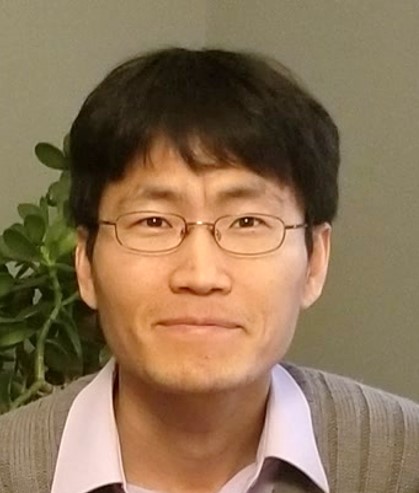Cellular and Molecular Bioengineering
Exploring the Impact of Multipoint Mechanical Force on Bone Tissue Through a Novel Bioreactor
(I-358) Exploring the Impact of Multipoint Mechanical Force on Bone Tissue Through a Novel Bioreactor

Ellie A. Strauss, undergraduate
BME Student
George Fox University
Chattanooga, Tennessee, United States
Youngbok Abraham Kang
Associate professor
George Fox University, United States
Presenting Author(s)
Primary Investigator(s)
As organ-on-a-chip models are increasing in popularity, bone models provide a unique challenge for adaptation. Bone tissue is dynamic in nature, continually rebuilding itself to provide the most ideal scaffold for the organism. However, a competent understanding has wide ranging implications to bone associated disorders including various bone related cancers, osteoporosis, and more. Through exploring the impact of mechanical force on bones, researchers will be able to understand more about the causes and treatments for these diseases. Various bioreactors have been made addressing this issue. For bones, the primary type of compression is mechanical loading. Stimulation applicators include a piston compression system, a vertical compression system, and a fluid shear method of loading, featuring equiaxial stretching, asymmetrical loading, and bending. Multipoint compression is an unrepresented avenue of study. This device seeks to apply linear multipoint mechanical force on MG-63 bone cells, allowing increased exploration of how bone tissue reacts under stress. This device must allow for real-time monitoring, provide an adaptable method of applying mechanical force, and prove easy to both manufacture and use. Once completed, the bone cells will be simulated and observed regarding their cell viability and cell morphology. I hypothesize that through creating a device that applies multipoint compression, bone will present an in-vivo-like response, stimulating how cells react in the body to the continual pressure. The bone cells will react to mechanical loading through changing shape, with the new morphology being compressed and following the direction of compression, providing a more in-depth view of bone remodeling.
Materials and Methods::
The bioreactor has three units: the mechanical stimulation unit, the cell holding unit, and the electrical component unit. The mechanical stimulation unit consists of two stepper motors and four linear actuator motors, providing four points of movable stimulation alongside the cell holding unit. The cellular chamber is 8 cm long by 1 cm wide, made through PDMS molding in 3-D printed molds. The osteoblast cell line MG-63 (CRL-1427, human bone cells of a patient with Osteosarcoma) are seeded on a fibronectin coating in a PDMS stretchable chamber, making a 2D culture. Finally, there is the electrical component, constructed using an Arduino kit and coding. This component includes an LCD screen menu, which allows the selection of a loading cycle. The mechanical stimulation and cellular unit portion of the bioreactor measures in at 26 cm long, 13cm wide, and 6 cm tall, fitting underneath a standard microscope. The electrical component unit is separate, connected by wires, allowing the actual device to be more compact.
The cellular portion of this research is ongoing, with cells being continually placed in the device and subjected to various stimulation methods. The next phase of cellular research (which will hopefully be pursued in the future) includes investigation of a 3D culture where cells grow in 3% alginate gel.
Results, Conclusions, and Discussions::
The device is showing promising results, fulfilling all of its requirements and successfully completing the initial stages of the ongoing cellular testing. The bioreactor has a compact frame, fitting underneath the standard microscope (Figure 1&2). This allows for real-time monitoring of the cellular progress. Additionally, the device provides four-point compression, varying the different compression locations and compression strength based on the in-vivo model that requires replication. Two plungers on one side of the PDMS chamber sequentially or simultaneously (depending on the loading cycle) compress the PDMS chamber (and hence the cells) at 1 mm amplitude and 1 hz loading cycle, with the other side mirroring this action. There are three different program loading cycles. The first loads only one side of the device through the two plungers. The second includes two sided loading cycles through four plungers. The third is a customized loading cycle that allows for one to four points of compressive loading. This adaptability allows the mechanical stimulation to be applied based on the specific needs of the cells. Finally, the device is cheap and easy to manufacture, meeting the last of its criteria.
The cellular experimentation is ongoing, with cells currently undergoing stimulation and observation. After seeding on the fibronectin coated surface, the cells proceed with their normal processes without the compression applied by the device. The cells on the PDMS and in the cell culture flask appear the same, save the striations on the PDMS surface, resulting from the molding technique. However, cell morphology changes as the mechanical loading is applied, with the cells quickly adopting a longer and thinner shape, curving along the direction of the compression applied (Figure 3 shows the cell morphology with a round shape and random direction before the applied load, and figure 4 shows the altered morphology after compression). As this portion of research is ongoing, data collection is continually collaborating these results, along with providing opportunities to complete more cellular testing. Overall, the successful manufacturing of the device and initial cellular results are fulfilling the previously stated hypothesis.
Acknowledgements (Optional): :
This project was supported in part by the George Fox University Grant GFU2023G10 and Richter’s Scholars Program.
References (Optional): :
